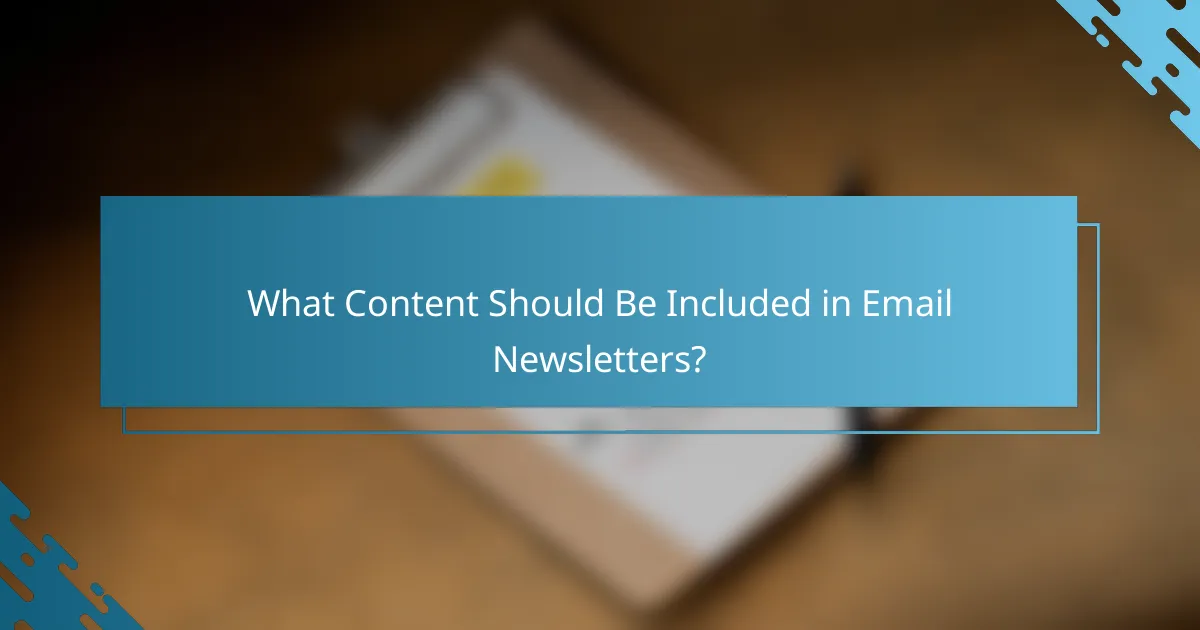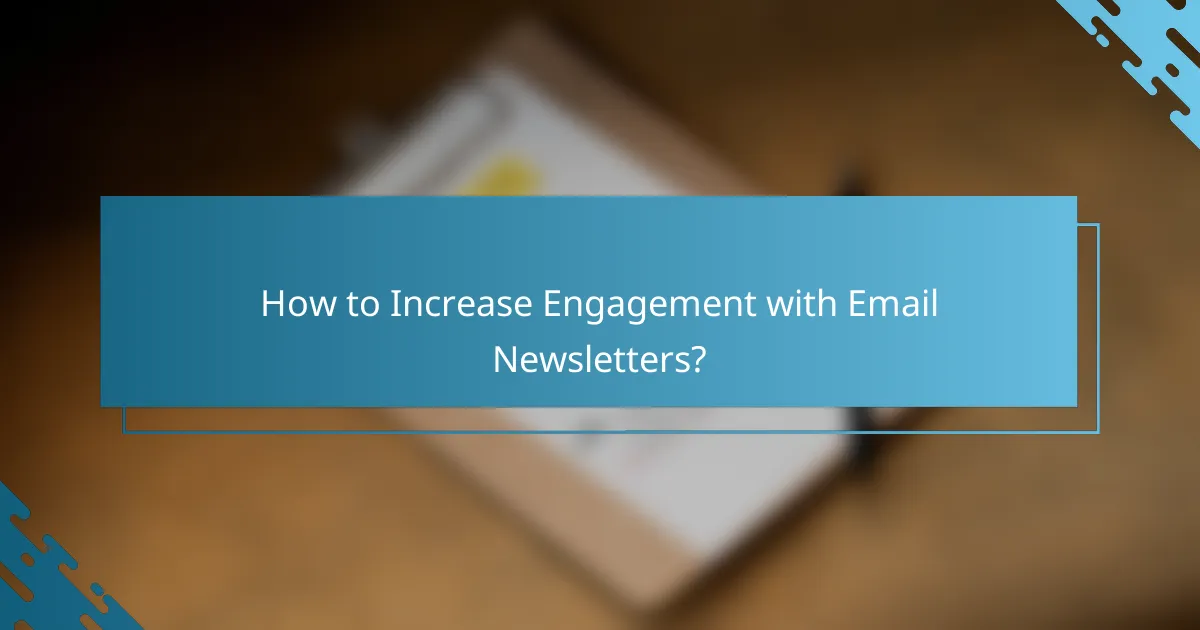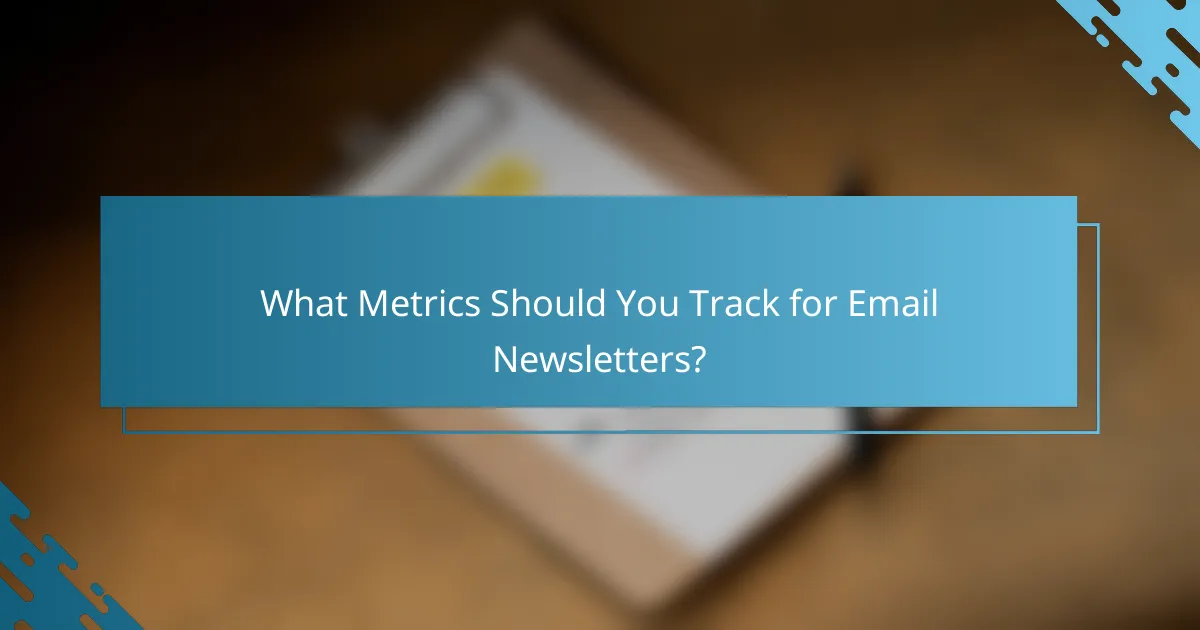Email newsletters are a powerful tool for engaging your audience and delivering valuable content. By focusing on visually appealing design and a thoughtful mix of informative and personalized messages, you can create a compelling experience that encourages reader interaction. Additionally, leveraging strategies like segmentation and A/B testing can enhance engagement and ensure your content reaches the right audience at the right time.

How to Design an Effective Email Newsletter?
Designing an effective email newsletter involves creating visually appealing content that engages readers and encourages interaction. Key elements include responsive design, a cohesive color scheme, and an organized layout to enhance readability and user experience.
Responsive design principles
Responsive design ensures that your email newsletter displays correctly on various devices, including smartphones, tablets, and desktops. Use fluid grids and flexible images to adapt the layout based on screen size, which improves accessibility and user engagement.
Test your designs across multiple devices and email clients to identify any issues. Aim for a mobile-first approach, as a significant portion of users access emails on their phones.
Color scheme and typography
Select a color scheme that aligns with your brand identity and evokes the desired emotional response. Use contrasting colors for text and background to enhance readability, and limit your palette to three to five colors for consistency.
Typography plays a crucial role in your newsletter’s design. Choose legible fonts and maintain a hierarchy through size and weight to guide readers through the content. Stick to two or three complementary fonts to keep the design cohesive.
Layout best practices
An effective layout organizes content logically and visually. Use headings, subheadings, and bullet points to break up text and make it scannable. Keep important information above the fold to capture readers’ attention immediately.
Consider using a single-column layout for mobile devices, as it simplifies navigation. Ensure that call-to-action buttons are prominently placed and easily clickable, ideally using a contrasting color to stand out.
Tools for design
Utilize design tools like Canva, Mailchimp, or Adobe Spark to create visually appealing newsletters without needing extensive design skills. These platforms often offer templates that can be customized to fit your brand.
For coding custom designs, consider using HTML and CSS to achieve a more tailored look. Familiarize yourself with email design best practices to ensure compatibility across different email clients.
Examples of successful designs
Look for inspiration from well-crafted newsletters that effectively engage their audience. Brands like Airbnb and The Skimm often utilize clean layouts, compelling visuals, and concise content that resonates with their readers.
Analyze what makes these designs effective, such as their use of whitespace, clear calls to action, and consistent branding. Use these insights to inform your own newsletter design, adapting successful elements to fit your unique style and audience.

What Content Should Be Included in Email Newsletters?
Email newsletters should include a mix of informative and engaging content that resonates with your audience. Key elements often encompass updates, promotions, and personalized messages that encourage reader interaction.
Types of content to engage readers
To effectively engage readers, consider including a variety of content types such as articles, videos, infographics, and product highlights. Each type serves a different purpose; for example, articles can provide in-depth insights, while videos can deliver quick, engaging messages.
Incorporating user-generated content, such as testimonials or social media posts, can also enhance engagement. This not only builds community but also fosters trust in your brand.
Personalization strategies
Personalization is crucial for increasing the relevance of your email newsletters. Use subscriber data to tailor content based on preferences, past purchases, or engagement history. For instance, segment your audience into groups and send targeted promotions that align with their interests.
Additionally, addressing subscribers by their names in the subject line or greeting can significantly improve open rates. Consider using dynamic content that changes based on the recipient’s profile to further enhance the personalized experience.
Call-to-action best practices
Effective call-to-action (CTA) buttons are essential for driving reader engagement. Ensure your CTAs are clear, concise, and visually distinct from other content. Use action-oriented language, such as “Shop Now” or “Learn More,” to encourage clicks.
Position your CTAs strategically within the newsletter, ideally at the top and bottom, to capture attention. Testing different placements and designs can help identify what resonates best with your audience. Avoid cluttering your newsletter with too many CTAs, as this can overwhelm readers and dilute their effectiveness.

How to Increase Engagement with Email Newsletters?
To boost engagement with email newsletters, focus on delivering relevant content to the right audience at the right time. This involves utilizing segmentation, A/B testing, and optimizing timing and frequency to ensure your messages resonate with subscribers.
Segmentation techniques
Segmentation involves dividing your email list into smaller groups based on specific criteria, such as demographics, behavior, or preferences. This allows you to tailor content to meet the unique interests of each segment, which can significantly enhance engagement rates.
Common segmentation strategies include targeting based on past purchase behavior, engagement levels, or geographic location. For example, you might send different promotions to customers in urban areas versus rural areas, ensuring that the content is relevant to their context.
A/B testing methods
A/B testing, or split testing, is a method where you send two variations of an email to different segments of your audience to determine which performs better. This can involve testing subject lines, email layouts, or call-to-action buttons.
To conduct effective A/B tests, choose one variable to test at a time and ensure you have a large enough sample size for statistically significant results. For instance, if you test two subject lines, send each version to a similar number of subscribers and analyze the open rates to identify the winner.
Timing and frequency recommendations
Timing and frequency are crucial for maximizing engagement with email newsletters. Generally, sending emails during weekdays, particularly Tuesday to Thursday, tends to yield higher open rates compared to weekends.
As for frequency, aim for a balance that keeps your audience engaged without overwhelming them. A common practice is to send newsletters weekly or bi-weekly, but this can vary based on your audience’s preferences and the nature of your content. Monitor engagement metrics to adjust your strategy accordingly.

What Are the Best Tools for Email Newsletter Creation?
The best tools for email newsletter creation combine user-friendly design features with effective content management and engagement analytics. Popular platforms like Mailchimp, Constant Contact, and Sendinblue offer distinct functionalities that cater to various needs and budgets.
Mailchimp features
Mailchimp is known for its intuitive drag-and-drop editor, which allows users to create visually appealing newsletters without coding skills. It offers customizable templates, A/B testing, and automation features that help streamline the email marketing process.
Additionally, Mailchimp provides robust analytics, enabling users to track open rates, click-through rates, and subscriber engagement. This data can inform future campaigns and improve overall performance.
Constant Contact benefits
Constant Contact excels in its customer support and ease of use, making it ideal for beginners. The platform includes a variety of templates and a simple interface that allows for quick newsletter creation.
Moreover, Constant Contact offers features like social media integration and event marketing tools, which can enhance engagement and broaden reach. Its reporting tools provide insights into campaign effectiveness, helping users refine their strategies.
Sendinblue pricing
Sendinblue’s pricing structure is competitive, offering a free tier for users with basic needs, while paid plans start at a low monthly fee based on the number of emails sent rather than the number of subscribers. This can be advantageous for businesses with large lists but lower email frequency.
Users should consider the scalability of Sendinblue as their email marketing needs grow. The platform includes features like SMS marketing and advanced segmentation, which can be beneficial as campaigns become more sophisticated.

What Metrics Should You Track for Email Newsletters?
Tracking the right metrics for email newsletters is crucial for understanding performance and improving engagement. Key metrics include open rates, click-through rates, conversion rates, and unsubscribe rates, which provide insights into how well your content resonates with your audience.
Open Rates
Open rates measure the percentage of recipients who open your email. A good open rate typically ranges from 15% to 25%, depending on your industry. To improve this metric, focus on crafting compelling subject lines and ensuring your emails are sent at optimal times.
Click-Through Rates
Click-through rates (CTR) indicate the percentage of recipients who click on links within your email. A CTR of 2% to 5% is often considered effective. To boost this rate, include clear calls to action and ensure that your content is engaging and relevant to your audience’s interests.
Conversion Rates
Conversion rates reflect the percentage of recipients who complete a desired action, such as making a purchase or signing up for an event. Typical conversion rates can vary widely, often falling between 1% and 5%. To enhance conversions, align your email content with landing page experiences and offer incentives like discounts or exclusive content.
Unsubscribe Rates
Unsubscribe rates show the percentage of recipients who opt out of your mailing list after receiving an email. A rate below 1% is generally acceptable. To minimize unsubscribes, regularly clean your email list, provide valuable content, and allow recipients to customize their preferences instead of opting out entirely.
